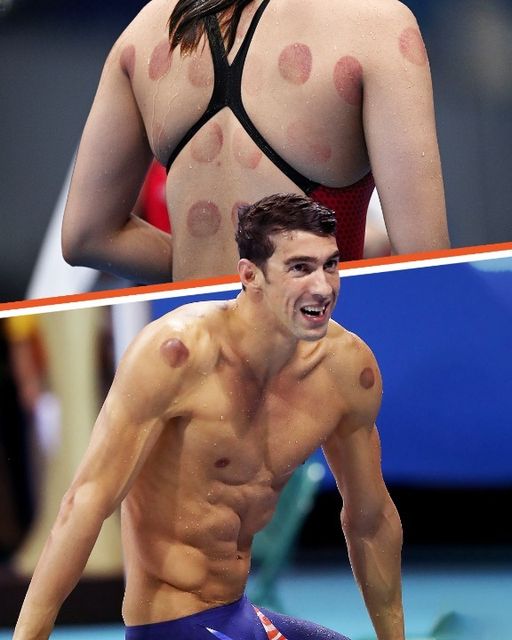At recent Olympic Games, viewers have noticed distinctive dark red circular marks on athletes’ bodies, especially on swimmers and gymnasts.
These marks are not bruises but are caused by a practice called cupping therapy. This ancient technique, which originated in traditional Chinese medicine over 2,000 years ago, involves creating suction on the skin using special heated or air-pumped cups.
The suction brings blood to the targeted area, which practitioners believe helps reduce inflammation, improve circulation, and ease muscle tension, making it popular among athletes for recovery and performance enhancement.
Swimmer Michael Phelps brought widespread attention to cupping when he appeared at the 2016 Rio Olympics with visible circular marks on his shoulders. His visible marks intrigued fans, and his endorsement of cupping sparked curiosity worldwide.
Phelps wasn’t alone; other Olympians, such as gymnast Alexander Naddour, also sported these marks during the games. Phelps, along with other athletes on the U.S. Olympic team, helped normalize cupping therapy as a mainstream recovery method.
Members of the U.S. women’s gymnastics team have also adopted cupping, adding to the popularity of the technique among elite athletes.
Cupping marks are also seen on celebrities, as noted with actress Gwyneth Paltrow, who sported these marks back in 2004 at the “Anchorman” premiere, leading to media coverage of the practice.
Jennifer Aniston also displayed similar marks in 2013 at the premiere of Call Me Crazy. These celebrity appearances brought additional attention to the traditional therapy outside the sports world.
The cupping process uses cups made from materials such as glass, bamboo, or even earthenware. While the exact mechanism is not fully understood, proponents argue that it supports muscle recovery by increasing blood flow and reducing muscle stiffness.
Research suggests cupping may even help with medical conditions like back pain, neuralgia, and certain skin conditions. However, medical studies on cupping remain inconclusive, with some researchers noting it may offer a placebo effect rather than proven medical benefits.
Despite mixed scientific backing, cupping continues to be widely used by athletes and practitioners. It remains a recognizable and popular technique in both sports and wellness circles, appreciated for its perceived benefits in muscle relief and body recovery.

Leave a Reply